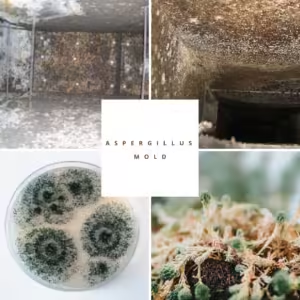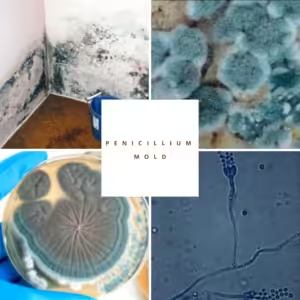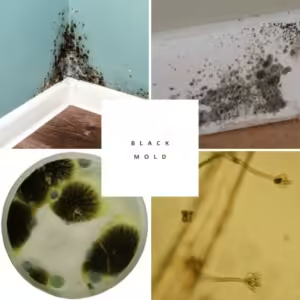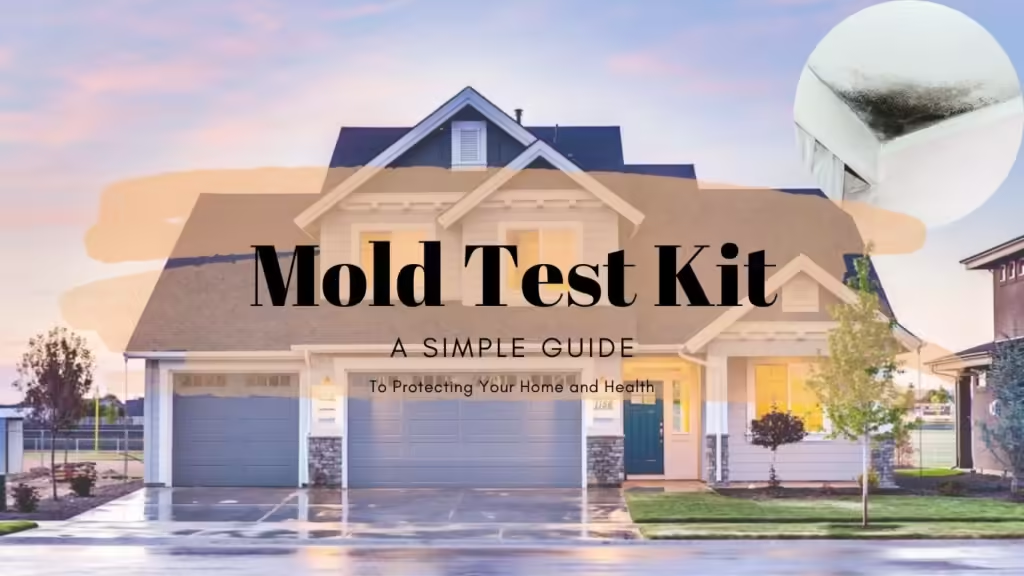Mold is a common household problem that can pose serious health risks, especially for people with allergies or respiratory issues. It often grows in damp areas like bathrooms and basements. Mold test kits offer a simple way to detect hidden mold, allowing homeowners to address issues before they escalate. These kits can check air quality and surfaces, helping to identify mold not visible to the naked eye. Proper use of a mold test kit is essential for maintaining a healthy home environment and reducing mold-related health risks.
What is a Mold Test Kit?
A mold test kit is a specialized tool designed to identify the presence of mold in indoor environments by collecting samples from the air, surfaces, or materials. These kits are essential for homeowners and property managers looking to ensure a safe living space. Mold test kits come in several varieties, each serving a specific purpose:
Air Sampling Kits
These kits are designed to measure the concentration of mold spores present in the air. By capturing airborne spores, they provide valuable insight into the overall air quality of a space. Air sampling kits are particularly useful in assessing areas where mold growth is suspected but not visibly apparent. They can help identify elevated mold levels that may pose health risks to occupants. These kits typically include specialized equipment designed to collect samples efficiently and accurately, allowing for the assessment of indoor air quality.
- Air-Sampling Devices: Kits often feature devices that can capture airborne microbial samples, protected by weather shields to prevent contamination.
- Suction Pumps and Tubes: Some kits include suction pumps and tubes that facilitate the collection of air samples, ensuring ease of use even for amateurs.
- Selective Sampling Mechanisms: Advanced kits allow for selective sampling of different particle sizes, enabling the differentiation between bacterial and fungal particles.
Surface Testing Kits
Surface testing kits are utilized to sample visible mold growth on various surfaces, such as walls, floors, and furniture. These kits typically include swabs or adhesive strips to collect samples directly from the affected areas. Analyzing surface samples can help determine the extent of mold contamination and guide remediation efforts effectively.
- Surface testing kits typically include swabs, adhesive strips, or petri dishes for collecting samples directly from affected surfaces such as walls, floors, ceilings, and furniture.
- After collecting samples, users can either send them to a laboratory for detailed analysis or use onsite testing methods provided in the kit. Lab analysis usually offers more comprehensive results, identifying specific mold types and concentrations.
Bulk Sampling Kits
Bulk sampling kits are specialized tools designed to test larger materials for the presence of mold. These kits are particularly useful in identifying hidden mold growth within building materials, such as drywall, insulation, carpet, and wood. By allowing users to collect samples from these materials, bulk sampling kits play a vital role in mold assessment and remediation efforts.
- Bulk sampling kits typically include tools like utility knives, sample bags, or containers to facilitate the collection of larger pieces of material. This allows for a thorough examination of suspected mold growth.
- Users can collect samples from various depths within the material, which is essential for detecting mold that may not be visible on the surface. This is particularly important in areas that have been exposed to moisture.
- Samples collected using bulk sampling kits are often sent to a laboratory for detailed analysis. Lab testing can provide insights into the type and concentration of mold present, helping to assess the severity of contamination.
Why Use a Mold Test Kit?
Mold can silently thrive in hidden areas of your home, making testing one of the most effective ways to detect it early. There are several situations where conducting mold tests becomes particularly important:
After Water Damage
Mold can begin to grow rapidly in areas that have experienced water damage, such as following flooding or leaks. Even small amounts of moisture can create an environment conducive to mold growth, so it’s crucial to test these areas promptly to prevent further contamination. Mold growth following water damage is a significant concern, particularly in the aftermath of flooding or hurricanes. The rapid onset of mold growth can occur within 48 hours if materials remain damp, leading to various health risks for occupants and responders. Understanding the causes and implementing effective remediation strategies are crucial for mitigating these risks. Addressing moisture issues within 48 hours is critical to prevent extensive mold growth. It is recommended to use N95 respirators and other protective gear for those involved in the cleanup efforts (Johanning et al., 2014).
- Mold thrives in damp environments, particularly on cellulose-containing materials like wood and drywall (Johanning et al., 2014).
- Failure to dry affected areas promptly can aggravate mold growth (Metts, 2008).
Health Symptoms
If you or your family members are experiencing persistent allergy symptoms—such as sneezing, coughing, or respiratory issues—it may be linked to mold exposure. For more details on mold toxicity visit our blogpost related to 10 warning signs of mold toxicity. Testing can help identify whether mold is present in your home, allowing you to address the issue and improve your indoor air quality.
Pre-Purchase Inspections
Mold testing is often part of home inspections to avoid future health risks. When buying a new home, mold testing is often a crucial part of the inspection process. Identifying mold before finalizing a purchase can help you avoid future health risks and costly remediation efforts. It’s wise to ensure that your potential new home is free from mold-related problems.
Regular Monitoring
In humid climates or homes with poor ventilation, regular mold testing can be especially beneficial. High humidity levels and inadequate airflow create ideal conditions for mold to thrive. By conducting periodic tests, you can monitor for mold growth and take proactive measures to maintain a healthy living environment.
How Mold Test Kits Work
The testing process for mold can vary significantly based on the type of kit used. Here’s a closer look at the different methods available:
Air Samples
Air sampling kits are designed to capture mold spores present in the air. These kits typically include a specialized collection container or device that collects air samples over a set period. Once the sampling is complete, the container is sealed and sent to a laboratory for detailed analysis. This method is particularly useful for assessing overall air quality in space and detecting airborne mold spores that may not be visible.
Swab Samples
Swab sampling kits allow users to collect samples directly from visible mold patches. To use this kit, simply rub a sterile swab over the affected area, ensuring to gather a sufficient amount of the mold. The swab is then placed in a designated container for transport to a laboratory. This method is effective for identifying specific types of mold and determining the extent of contamination on surfaces such as walls, ceilings, or furniture.
Tape Lifts
Tape lift kits utilize adhesive tape to capture mold samples from surfaces. To perform this test, a piece of adhesive tape is pressed firmly onto a surface where mold is visible. After a brief duration, the tape is removed and carefully transferred onto a glass slide or petri dish for laboratory analysis. Tape lifts are particularly effective for capturing both mold spores and fragments, providing a comprehensive understanding of mold presence on the tested surface.
Choosing the Right Mold Test Kit
When choosing a mold test kit, consider these factors:
- Type of Mold Testing: Determine whether air sampling, surface testing, or bulk sampling best suits your needs.
- Ease of Use: Look for kits with clear instructions and tools for sample collection.
- Budget and Quality: Some kits include lab fees, while others charge additional fees for lab analysis.
Interpreting Test Results
After collecting samples and sending them for analysis, you will receive results that specify the types of mold present in your environment. Understanding these results is crucial for addressing any mold-related concerns effectively. Here are some common mold types you might encounter indoors:
Common Indoor Mold Types
Aspergillus (Brown Mold)

Often found in damp areas such as walls and basements, Aspergillus can lead to allergic reactions and respiratory issues in sensitive individuals. This mold thrives in environments with high humidity and can be a common contaminant in homes.
Penicillium

Frequently discovered on materials that have suffered water damage, Penicillium can trigger respiratory problems and allergies. This mold is known for its blue or green coloration and can grow on various surfaces like carpets, wallpaper, and insulation.
Stachybotrys (Black Mold)

Commonly referred to as “black mold,” Stachybotrys is notorious for its association with severe health risks, including respiratory issues and immune system problems. Its presence typically indicates significant moisture issues and often requires professional remediation to safely remove it.
Next Steps After Testing
If the test detects mold, it’s essential to address both the mold and its underlying cause, such as leaks or poor ventilation. Depending on the severity, your options include:
- DIY Cleaning: For small, manageable mold patches, household cleaners and scrubbing can work.
- Professional Remediation: Larger infestations, or toxic mold like Stachybotrys, require professional removal.
- Moisture Control: Fix leaks, use dehumidifiers, and ensure good ventilation to prevent mold regrowth.
Preventive Measures
Preventing mold involves regular upkeep and monitoring. Tips include:
- Control Humidity: Keep indoor humidity levels below 60%.
- Improve Ventilation: Use fans in bathrooms and kitchens to minimize moisture buildup.
- Regular Inspections: Check for leaks, condensation, and signs of mold in basements, bathrooms, and attics.
Proper care and preventive measures can save on future mold-related costs and health risks.
FAQ
- What is the purpose of a mold test kit? A mold test kit helps detect mold presence in the air, surfaces, or materials in your home.
- How accurate are DIY mold test kits? Many DIY kits are accurate, but lab analysis adds reliability.
- What are the symptoms of mold exposure? Symptoms include allergies, respiratory issues, and skin irritation.
- Can mold grow in any type of home? Yes, mold can develop in any home with moisture, especially in humid climates.
- Is all mold harmful? Not all molds are harmful, but prolonged exposure to certain molds can cause health issues.
- Can I remove mold on my own? Small amounts of mold can often be cleaned with household solutions, but toxic mold requires professional help.
- How often should I test for mold? Annually or after water damage is ideal, or whenever symptoms appear.
- Do mold test kits include lab analysis? Some do, but others may charge an additional lab fee.
- Can mold come back after removal? Yes, if moisture issues are not addressed, mold can regrow.
- Is mold testing necessary when buying a home? Yes, it helps uncover hidden mold issues and avoid future repairs.
Thank you for reading, for more interesting articles visit our homepage.




Pingback: 10 warning signs of mold toxicity